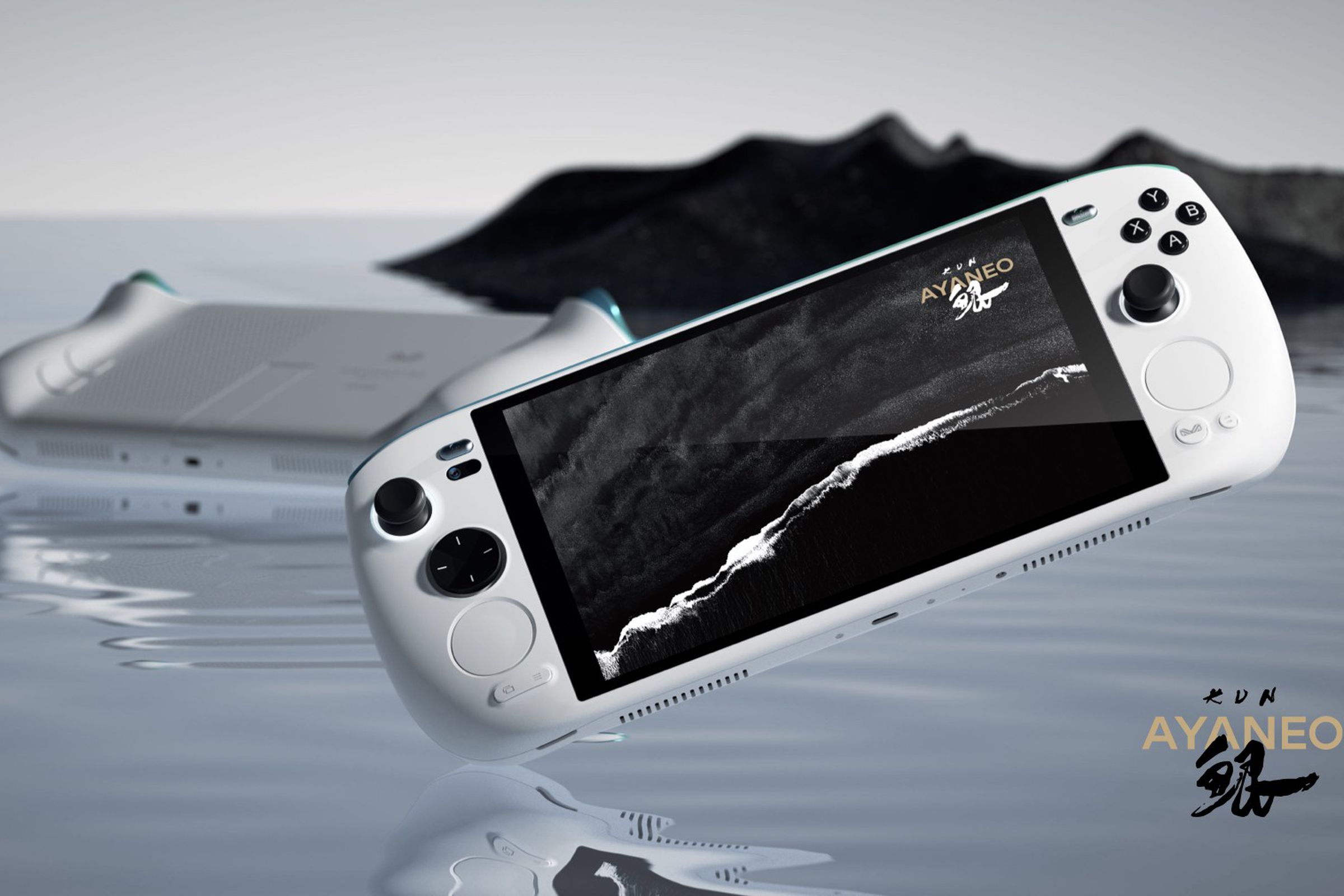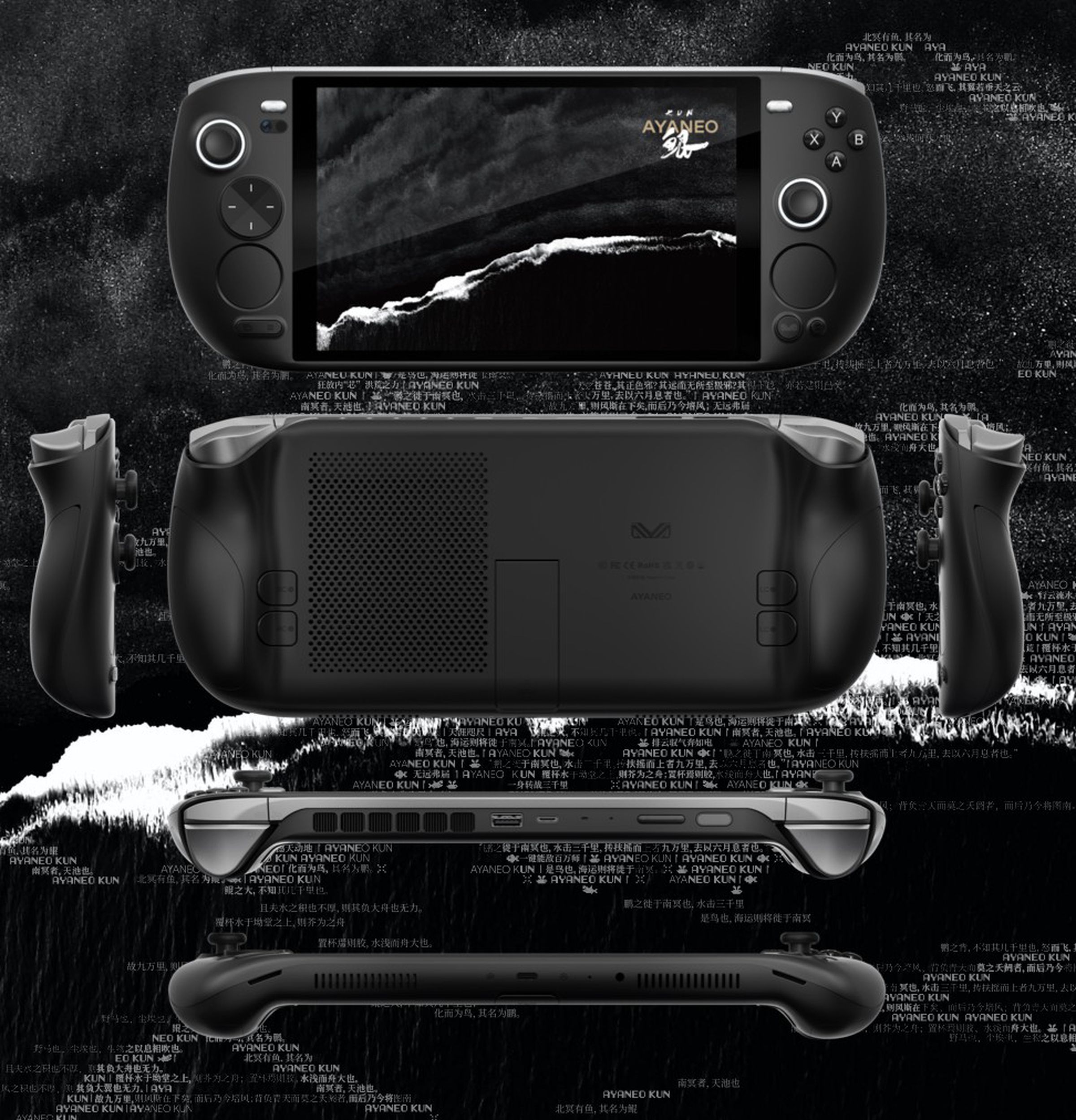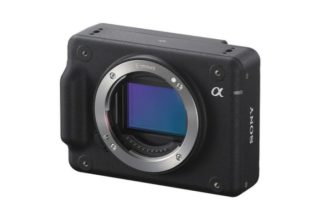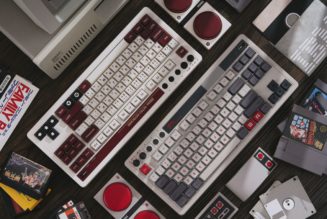On paper, it’s the ultimate PC gaming handheld.
Share this story
See our ethics statement.

The Steam Deck’s biggest weakness is battery life — and yet somehow, every challenger has failed to raise that bar. The Ayaneo 2 showed us that AMD’s Ryzen 6800U wasn’t ready to compete; the Asus ROG Ally revealed that AMD’s Z1 Extreme couldn’t pull ahead if Asus insisted on matching the Steam Deck’s 40 watt-hour battery pack.
But Ayaneo may have an answer: it’s stuffing a 75 watt-hour pack into a larger, heavier handheld called the Ayaneo Kun that — it now claims — can last nearly three and a quarter hours at 15W TDP. That’s nearly double the battery and runtime you’d expect from a Steam Deck at that wattage, though it appears it wasn’t captured while playing a game, exactly.


We’ve mentioned the Ayaneo Kun on The Verge a couple of times before, but today the company revealed its full array of features, price, expected ship window, and that you’ll be able to crowdfund it on September 5th if you’re willing to pay with no guarantees.
Personally, I’d wait. But there’s no question that this handheld has the strongest spec sheet yet — starting with a comparatively large 8.4-inch, 2560 x 1600, 500-nit, 90 percent DCI-P3 color IPS screen.


Ayaneo seems to have heard how some people prefer the Steam Deck’s ergonomics and loads of buttons to its own previous handhelds, too — so the Kun adds bigger grips, dual touchpads (each with four distinct buttons underneath), quad back buttons, beefier triggers, and even a little kickstand reminiscent of the original Nintendo Switch.
There’s also a little Windows Hello front-facing camera underneath the back/select button for face login and streaming, something most handhelds have entirely omitted — as well as Hall Effect joysticks and triggers to avoid drift, HD linear motors for rumble (like the Switch and DualSense), and an optional 4G module for cellular connectivity. There’s a nano-SIM slot hidden underneath the kickstand.


And while houses the same AMD Ryzen 7840U chip you’ll find in many boutique PC gaming handhelds this year (the ROG Ally’s Z1 Extreme is a close cousin, too), the company claims its massive cooling system can crank that APU all the way up to 54 watts in its turbo mode — far higher than the 30-watt turbo on the Asus ROG Ally.


Is that practical? Perhaps not, as it looks like largely a 7 percent to 10 percent boost in framerates over the 30-watt mode in the company’s own tests. (Do, however, check the jump from 34fps to 43fps in The Witcher 3.) Ayaneo straight up says “54W is not recommended for daily use as the main TDP.”
But the Kun also houses a full-length M.2 2280 SSD slot for up to 8TB of internal storage, whereas the Deck and many competitors top out at 2TB because you can only fit one chip on their single-sided M.2 2230 SSDs.


Ayaneo is pricing the Kun starting at $1,209 retail for 16GB of RAM and 512GB of storage, stretching all the way to $1,949 for 64GB of RAM and a 4TB SSD. Early bird prices start around $200 less. The Steam Deck starts at $400, but with only 64GB of eMMC storage; while I took that route and swapped out my drive myself, I think it’s fair to say the Kun is roughly twice the price if we compare 512GB vs. 512GB models.


If you’re interested in the Ayaneo Kun, I would suggest three things:
First, understand that aside from battery, the biggest issue with Steam Deck competitors is that they run Windows. It’s a little counterintuitive (isn’t Windows where the games are?) but Windows is seriously unoptimized for a handheld gaming PC, trackpads or no, and I run into all sorts of annoyances that the Steam Deck has already solved.
Crowdfunding is a chaotic field by nature: companies looking for funding tend to make big promises. According to a study run by Kickstarter in 2015, roughly 1 in 10 “successful” products that reach their funding goals fail to actually deliver rewards. Of the ones that do deliver, delays, missed deadlines, or overpromised ideas mean that there’s often disappointment in store for those products that do get done.
The best defense is to use your best judgment. Ask yourself: does the product look legitimate? Is the company making outlandish claims? Is there a working prototype? Does the company mention existing plans to manufacture and ship finished products? Has it completed a Kickstarter before? And remember: you’re not necessarily buying a product when you back it on a crowdfunding site.
Second, watch Taki Udon’s video embedded below. He’s a very experienced handheld reviewer who goes over the ergonomic tradeoffs in great detail.
Third, know that while Ayaneo has a pretty good track record of shipping slick hardware, the company tends to be fire-and-forget. It has a habit of very quickly moving onto its next handheld gaming PC before the previous customers are satisfied. Its software generally needs a lot of work, is not well localized for English speakers, and I’ve run into all sorts of weird bugs across the three Ayaneo handhelds I’ve tried.
Each Ayaneo handheld I’ve tried has been better than the last, though, and their new Ayaspace 2.0 isn’t bad. I bet they nail it one day.









